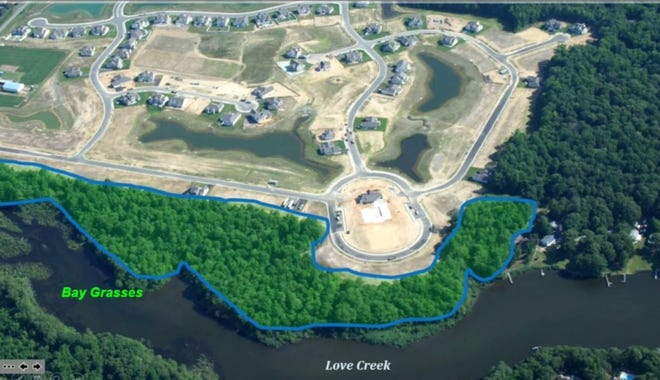After a marathon session of Sussex County Council on Tuesday, Jan. 12, the proposed wetland buffer ordinance is no closer to being adopted following a deluge of public testimony and presentations.
The ordinance calls for the county to:
- Consider strategies for preserving environmental areas from development and the protection of wetlands and waterways,
- Recognize the Inland Bays, their tributaries and other waterbodies as valuable open space areas of ecological importance,
- Identify an appropriate range of wetlands buffer distances based upon location and context, and
- Review appropriate sections of Sussex County’s zoning and subdivision codes to determine if amendments are needed that will better help protect groundwater, waterways, sensitive habitat areas and other critical natural lands in Sussex County.
While the record is being kept open until the council’s Tuesday, Feb. 22 meeting, a number of residents provided testimony in support of the ordinance with considerably fewer in opposition.
More on protecting marshland:Federal grant seeks to protect valuable Eastern Shore marshland
More on flood insurance hikes:Flood-prone Sussex County homes could see rate hikes in insurance program overhaul
Ongoing Testimony

Wetland buffers have been shown to stop saltwater incursion in areas of sea level rise, protect private property from storm surges when they act as buffers, protect waterways from polluting runoff from developments, and provide an ecological habitat for beneficial wildlife critical to the area. They also provide aesthetic features to developments when walkways can be accommodated.
“This is an important ordinance for water quality, habitat and wildlife for Sussex County,” said Chris Bason, executive director for the Delaware Center for the Inland Bays. “Buffers have been in our management plan for a long time and Sussex is the lead on buffer plans like this. People around the waterways care about the water and the creek they use and its condition.”
The variety of wetlands include those using forests, which provide the most protection to developments and others that use wetland grasses that are also common for inland waterways.
Full buffer widths usually run 100 feet with smaller variations only 50 feet. According to much of the testimony in favor of the ordinance, developers forgo those dimensions and make them as small as 12 feet.
According to groups like the Delaware Center for the Inland Bays, contaminants and runoff into state waterways are not protected with such ineffective barriers.
“Land is finite and much of it is slipping away in our area and cannot be reclaimed. County council has the opportunity and responsibility to author a buffer ordinance with enough teeth to be effective and make a real difference,” said Christina Darby, a resident of Seaford.

Those opposing the proposed measures call the ordinance no less than an overreach by the council and environmentalists. Should the ordinance be adopted, only some landowners would be subject to it.
“According to Delaware Department of Natural Resources and Environmental Control there are 220,000 acres of freshwater wetlands in Sussex County,” said Martin Ross, a resident of Delmar. “This ordinance would deny use of over 200,000 acres of private property and coupled with the federal overreach denies property owners the use of their property. Private property ownership is a right, not a privilege.”
Members of the public even contested the idea of placing homeowners associations (HOA) in charge of managing water buffers instead of state agencies citing that HOAs already have a long list of obligations to their residents.
“I don’t think it should fall on HOAs since we have trouble collecting our dues as it is regardless if you have a management company or not,” said Tom Bower, a resident of Delmar and an HOA president. “Putting this on the HOA is another form of an unfunded mandate, which shouldn’t be allowed or tolerated.”
The public is invited to add comments to the record until the council formally moves to close the testimony.
The ordinance formally amends “Chapter 99, Section 99-5, 99-6, 99-7, 2 99-23, 99-24, 99-26, and 99-30, and Chapter 115 Sections 115-4, 115- 3 25, 115-193, 115-220 and 115-221 regarding certain Drainage 4 features, Wetland and Water Resources and the Buffers 5 Thereto.”
More on flooding in the region:‘Water just kept coming’: How flooding in Salisbury moves from headache to an emergency